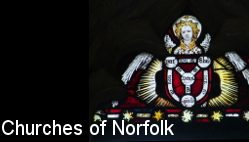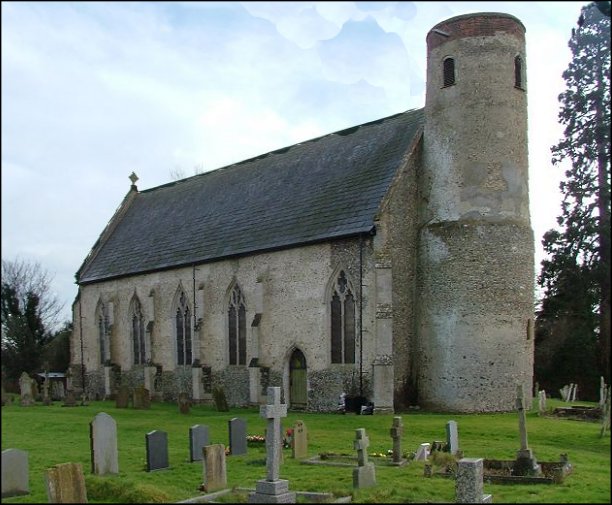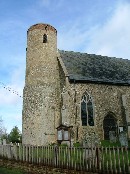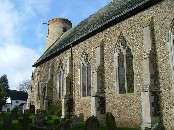| |
|
All
Saints, Wacton
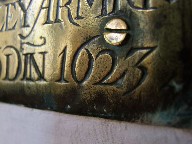 |
|
This
big church sits in its pretty village less than a
mile from the town of Long Stratton's anonymous
suburbia, but still has a thoroughly rural
setting. The tower narrows considerably, and is
clearly in two stages, probably three. The lowest
stage is almost certainly Saxon. But the
church built against it is something quite
singular. The narrow graveyard accentuates the
sheerness of the walls, a long, tall, narrow nave
and chancel in one that is pretty much as it was
when rebuilt, on the eve of the Black Death. By
the later decades of the fourteenth century we
stopped building churches like this, and the
colder rationalism of Perpendicular would take
over from the mystery of Decorated. All Saints
captures the moment before this happens
beautifully. What would have happened if the
Black Death hadn't arrived? European architecture
fragments at this moment, and probably
Christianity would not have become such a serious
business. Something of the joy goes out of
European culture in the middle years of the
fourteenth century.
|
What is this building like inside? When I
first wrote an entry for it I answered my own question in
just two words: no idea. All Saints was well-known by
East Anglian church explorers for being pretty much
completely inaccessible. It was not popularly known as
Fortress Wacton for its looks alone. But, as Bob Dylan
was wont to observe from time to time, the times they
are a-changin', for I was excited to discover that
All Saints was taking part in the 2010 Open Churches
week. Peter and I hurried up the A12 and out into Long
Stratton's hinterland. The sign on the gate confirmed the
rumours, and we opened the door into - well, what do you
imagine?
I have noticed that often it is only the
dullest, most over-restored churches which are kept
locked from one Sunday to the next, but I can reassure
you that this is not the case with All Saints, Wacton,
for this is a fascinating and very lovely church, which
deserves to be so much better known than it is. The
lovely brick floors, the airy tracery of the screen, the
substantial 15th Century font which would not be out of
place in one of Norfolk's grand, urban late 15th Century
churches, all conspire to an interior which is rather
breathtaking, actually. I was pleased and excited to
discover it, and perhaps a little cross that other people
hadn't been allowed to explore it too. But taking part in
Open Churches week is a step in the right direction, and
I hoped it might encourage the parish to embrace the
radical idea of being open during the days of other weeks
as well.
| There
are some intriguing ledger stones of the
Commonwealth period set in the brick floor around
the font. They are entirely secular except that
of the 26 year old John Eley who died in 1647 in
hope of resurrection unto life. Almost a
century later, a mural tablet remembers that Mary
Baker, daughter of the Rector was Wisest,
Virtuousest, Discreetest, Best. The mason
has had the grace to correct his spelling mistake
in the second word. Two
features were outstanding for me. One is the
roundel of 17th Century continental glass
depicting Christ with the Apostles, which I am
afraid is impossible to photograph because it is
in a perspex casing. The other is the excellent
1623 brass inscription to Abigail Sedley, the
daughter of John Knyvett of Ashwellthorpe - can
there be a more beautifully lettered brass of
that decade anywhere in Norfolk? At one time, it
would have been in the floor of the nave or
chancel. Now, it is screwed to the south wall,
and if there is ever a fire here it will melt
away like so much butter.
|
|
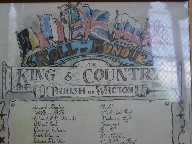 |
Simon Knott, February 2006
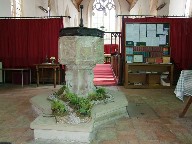 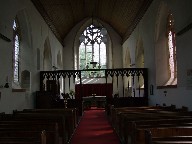 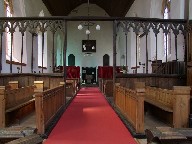 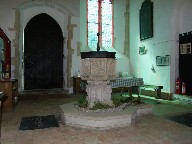
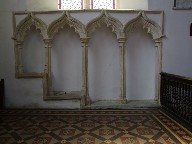 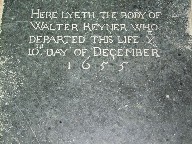 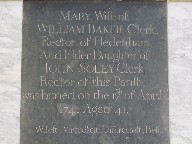 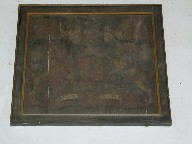
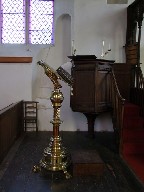 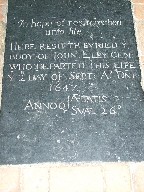 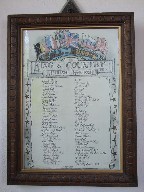 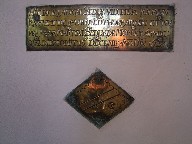
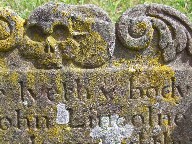 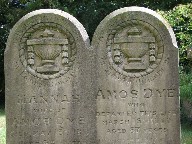 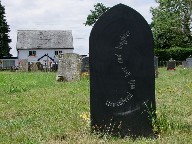
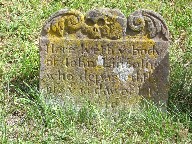 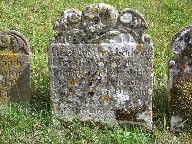 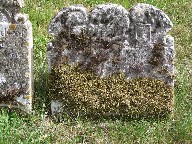
|
|
|
